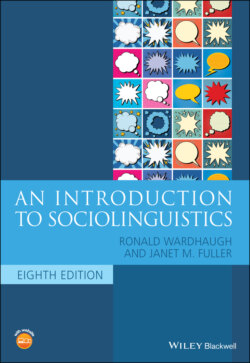Читать книгу An Introduction to Sociolinguistics - Ronald Wardhaugh, Janet M. Fuller - Страница 40
The role of social identity
ОглавлениеSociolinguists claim that the defining factor in determining whether two varieties are considered distinct languages or dialects of the same language is sociopolitical identity, not linguistic similarity or difference. Orientation toward a particular standardized language and, often, an associated national identity is what makes people identify as speakers of language X or Y.
In direct contrast to the above situation, we can observe that the loyalty of a group of people need not necessarily be determined by the language they speak. Although Alsatian, the dialect of German spoken in Alsace (France), is now in decline, for many generations the majority of the people in Alsace spoke their German tongue in the home and local community. However, they generally identified as French (Vajta 2013); speaking a Germanic dialect did not mean they identified with Germany. However, everyday use of Alsatian has been a strong marker of local identity, and for a long time was an important part of being Alsatian in France (Vassberg 1993; Gardner‐Chloros 2013).
The various relationships among languages and dialects discussed above illustrate how society is an important factor in how we view and use our languages. The standard is the most powerful dialect but it has become so because of non‐linguistic factors. ‘A language is a dialect with an army and a navy’ is a well‐known observation. The process through which a standardized language arises is primarily a sociopolitical process rather than a linguistic one; this is the topic of the next section of this chapter.
